
We don't normally name the monarch butterflies we rear, but we decided that the first one reared from an egg "The Greg Way" would be named for Greg--naturalist Greg Kareofelas, associate at the Bohart Museum of Entomology, UC Davis.
The first one, however, is a girl, so she's "Greta" instead of "Greg."
Over the last five years, we've reared more than hundred monarchs from caterpillar to chrysalis to adult. We collect the 'cats from the three species of milkweed in our Vacaville pollinator garden. This summer, however, we decided to collect a few eggs after seeing Mama Monarchs depositing them on tropical milkweed, Asclepias curassavica, and narrowleaf milkweed, Asclepias fascicularis. (As recommended, we cut back the tropical milkweed before the migratory season begins.)
Here's "The Greg Way":
"I put a single egg on its leaf in a small salsa container (the little plastic ones you would get at a Mexican restaurant)," Kareofelas says. "I take a square of toilet paper and fold it into a small square (3/4 of inch), dampen it and squeeze it so it is not sopping wet, just damp, and set the leaf and egg on the top. Put the lid tightly on the container. This keeps a level of moisture in the container. I check the containers daily, changing the toilet paper square to keep from molding."
The egg hatched. The caterpillar ate. And ate again, again and again. Did we mention "Again?" Again, again and again. She went through five instars, and then she j'd and formed a chrysalis on the ceiling of our indoor, netted butterfly habitat. The entire cycle from egg to larva to chrysalis to adult takes about a month. (See more on Bug Squad blog, Joy of Rearing Monarchs)
So Greta eclosed this morning, big, bold and beautiful. We released her in the pollinator garden, near where Mama deposited her as an egg. Greta inched up on a Mexican sunflower (Tithonia rotundiflora) and then took flight. A blur.
Hopefully, she will mate and overwinter in coastal California, avoiding the wildfires, adverse weather conditions and predators.
Safe travels, Greta! (And thank you, Greg!)
Attached Images:
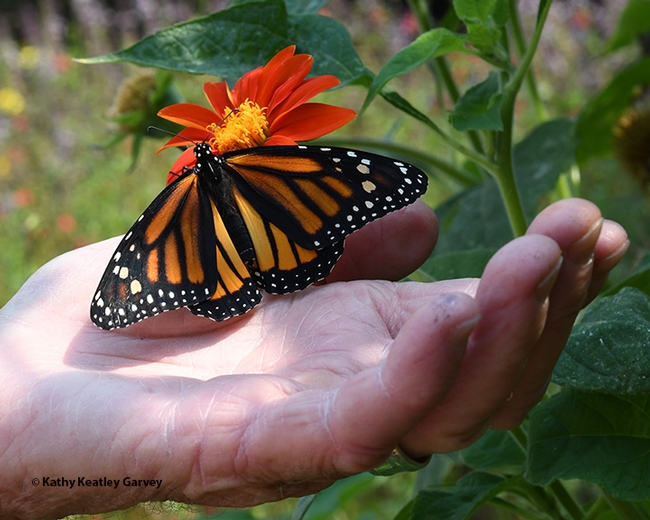
This monarch caterpillar was reared from an egg collected on a tropical milkweed, Asclepias curassavica, in a Vacaville pollinator garden. (Photo by Kathy Keatley Garvey)
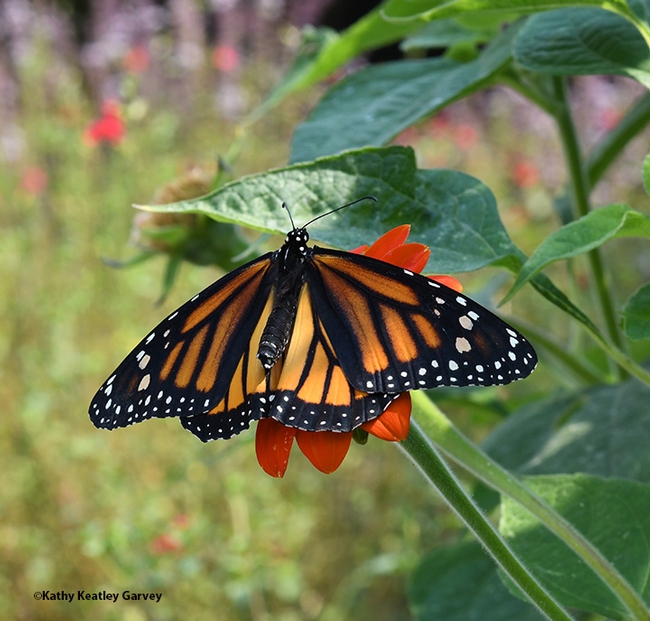
The newly eclosed monarch caterpillar named "Greta" latches onto a Mexican sunflower, Tithonia rotundiflora. (Photo by Kathy Keatley Garvey)
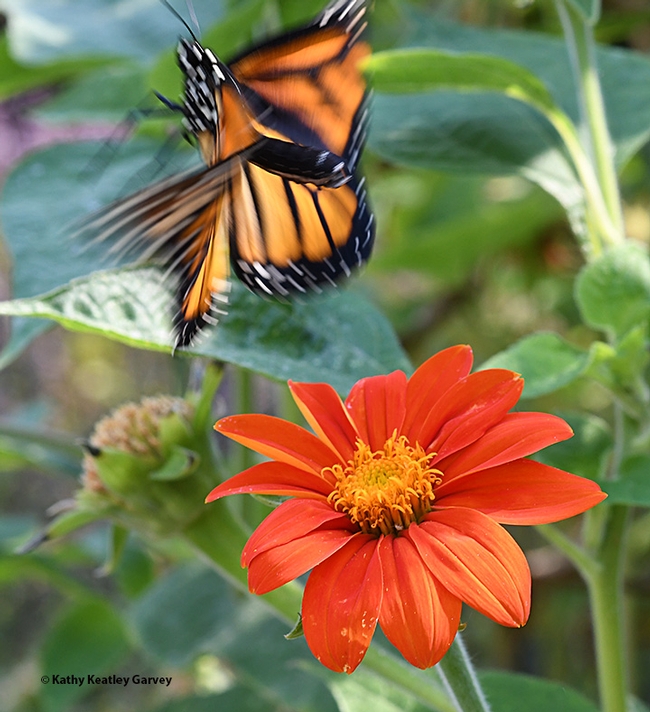
Greta, a monarch butterfly reared from an egg, is anxious to get where she's going. And fast. (Photo by Kathy Keatley Garvey)
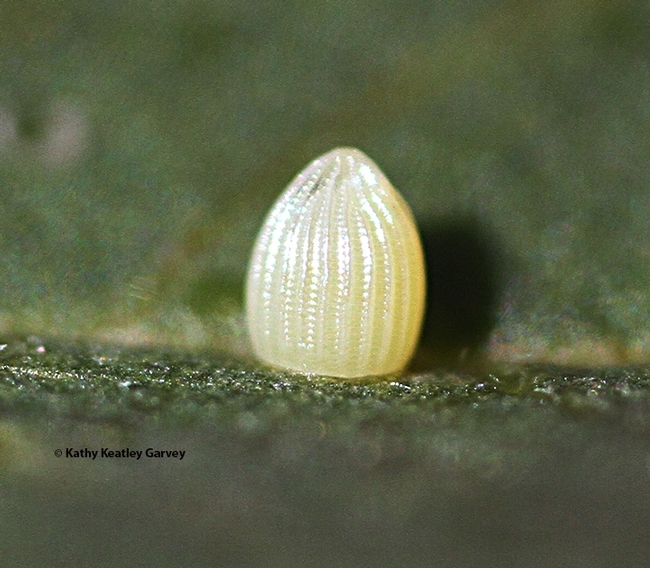
Monarch butterflies start out as a near microscopic egg. This image was taken with a Canon MPE-65mm lens. (Photo by Kathy Keatley Garvey)
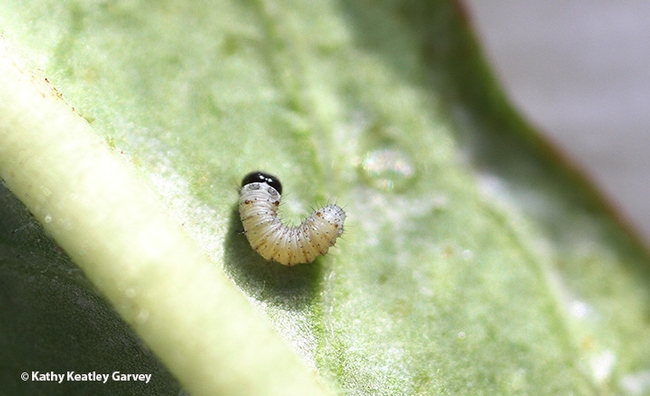
After hatching from egg to larva (caterpillar), it eats its shell and then begins munching on milkweed. (Photo by Kathy Keatley Garvey)
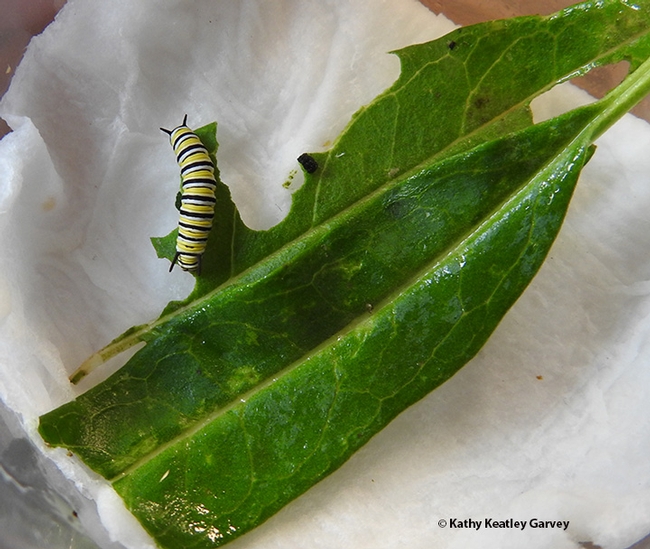
The monarch caterpillar munches milkweed; it will go through five instars. (Photo by Kathy Keatley Garvey)
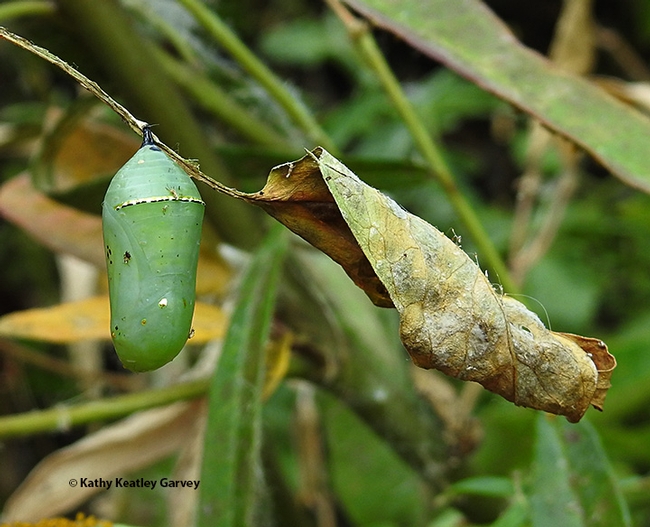
The jade-green monarch chrysalis is one of nature's jewels. (Photo by Kathy Keatley Garvey)